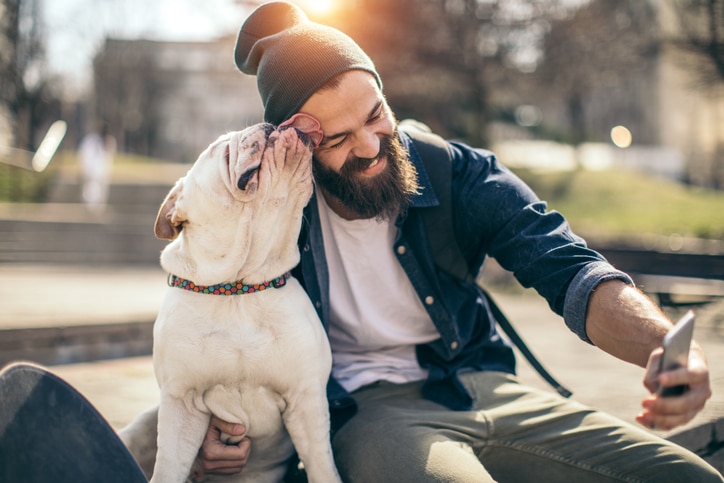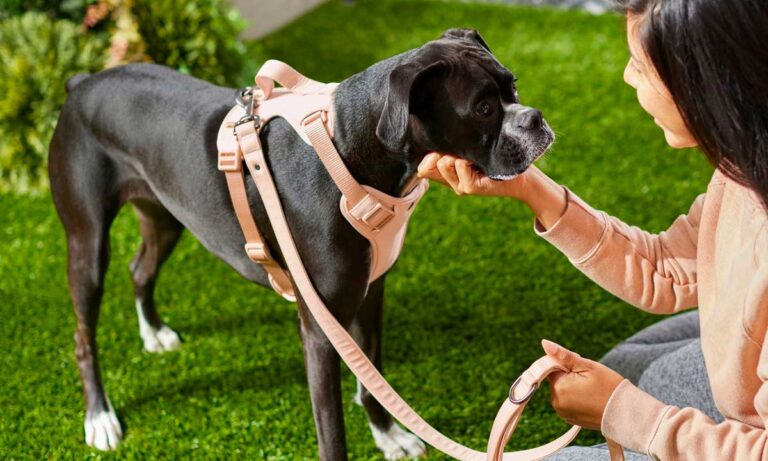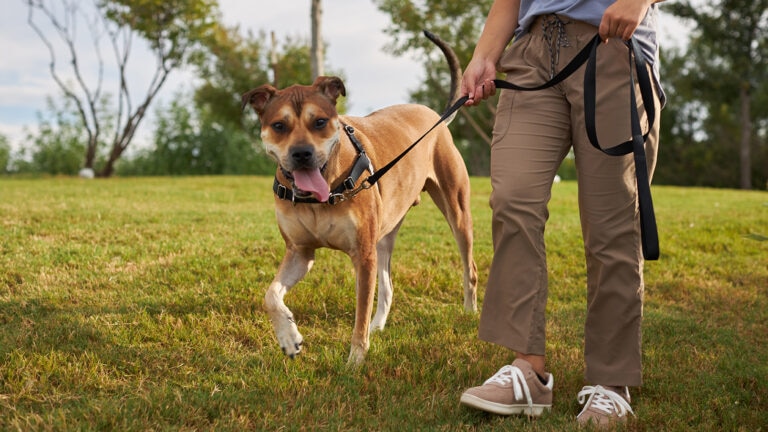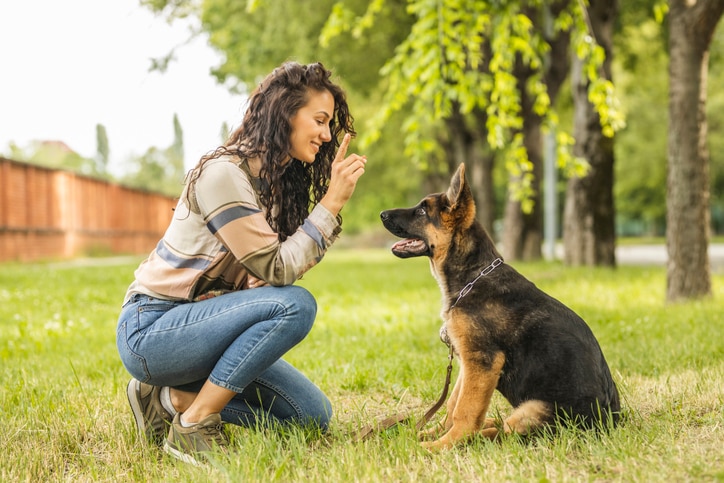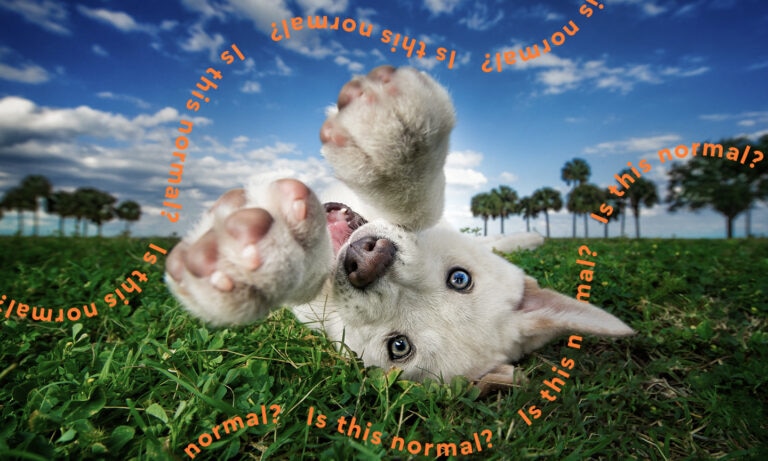Choosing the Best No-Pull Dog Harness for Your New Puppy
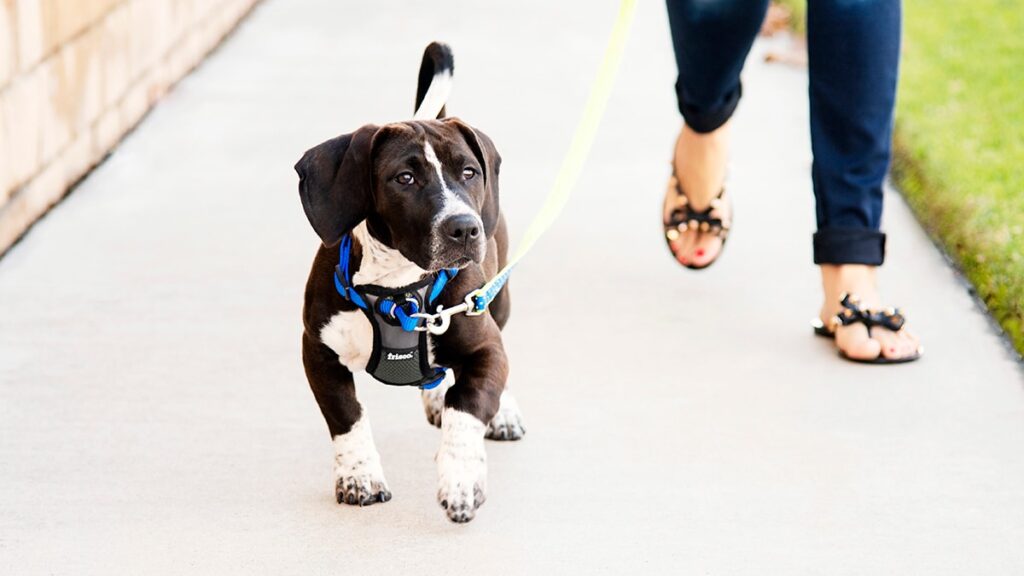
Photo by Jon Lofdahl
It’s not unusual to see a dog pulling on a leash with his mom or dad looking frustrated. This especially is common with puppies. The good news for frustrated pup parents is there are straightforward solutions for this common behavior, says Nora Bevilacqua, CPDT-KA, manager of behavior and training at Bideawee in New York City. One such solution is a no-pull dog harness.
What Is a No-Pull Dog Harness?
A no-pull dog harness is a harness constructed so the leash attaches at the front of the dog’s chest, underneath his throat, as opposed to the typical upper back. With a no-pull dog harness, if the pup pulls, it turns him to the side rather than allowing him to dive on ahead.
“The mechanism behind the no-pull dog harness is, when you attach the leash to the D ring on the front of the chest, you gain full control of the dog’s upper body, which is what he uses to pull you,” Bevilacqua says.
What to Consider When Choosing a No-Pull Dog Harness
When searching for the best no-pull dog harness for your pup, you’ll likely see a couple of different types.
The first type of no-pull dog harness allows you to attach a leash to the front of the chest, enabling you to steer your pup. PetSafe Easy Walk no-pull dog harness has straps in complementary colors, so you can see at a glance which strap goes over the shoulders and which goes under the belly.
On the second type of no-pull dog harness, the leash attaches to both the front of the chest and the back so it can be used in the typical way once your break your pup’s pulling habit. The Frisco Padded Front Lead Harness is designed to redirect your dog’s attention back to you without causing neck strain. It comes with an additional D-ring on the back of the harness for traditional leash attachment.
Both are made to do the same things: be comfortable for your pup and change your leverage of your dog’s body. The second type just allows for more options.
It also pays to look for a puppy harness that includes smart features for easy use, like adjustable slides on straps to ensure the right fit or fast-release buckles to make it easy to get on and off.
In addition to the type of no-pull harness and various special features, you’ll need to pay close attention to fit.
“Any harness has to fit properly in order for it to work and be comfortable for your furry companion,” Bevilacqua says.
When selecting a no-pull harness for your dog, be sure to utilize the sizing charts, and measure your dog carefully. Don’t guess at his length, height or girth.
Once you’ve found the right sized no-pull dog harness for your pup, it’s time to combine it with some training.
How Do You Stop a Puppy from Pulling on His Leash?
To discourage leash pulling in puppies, Bevilacqua’s advises teaching loose-leash walking using positive reinforcement, in addition to using the puppy harness.
“Positive reinforcement is the most effective way to make training fun and enjoyable for both of you,” she says.
While on your walk, try the commands “Stay with me” or “Heel.” Every few steps you take with your pup staying by your side, give him a yummy treat. Each time he pulls and gets in front of you, turn around and call him back to you using the “Stay with me” or “Heel” command. Speak firmly, but don’t yell.
Look for smaller-sized or low-calorie dog training treats to prevent your puppy from getting pudgy as a result of all your training sessions. Crazy Dog Train-Me Minis dog treats are small, with just 1.5 calorie per treat, and they come in a resealable bag, which is ideal for taking along on walks.
Another effective method is “stop and go.” Each time your dog pulls, you stop walking until he returns to your side. Once he’s settled, you can start walking again.
Remember that every dog is an individual, so it can be difficult to predict which approach will work best for your pup, Bevilacqua says.
“Take your time and be patient,” she adds.
Click here for more training tips on how to stop your dog from pulling on the leash.
Soon you’ll be on your way to peaceful, lunge-free walks around the block with your sweet new puppy.




